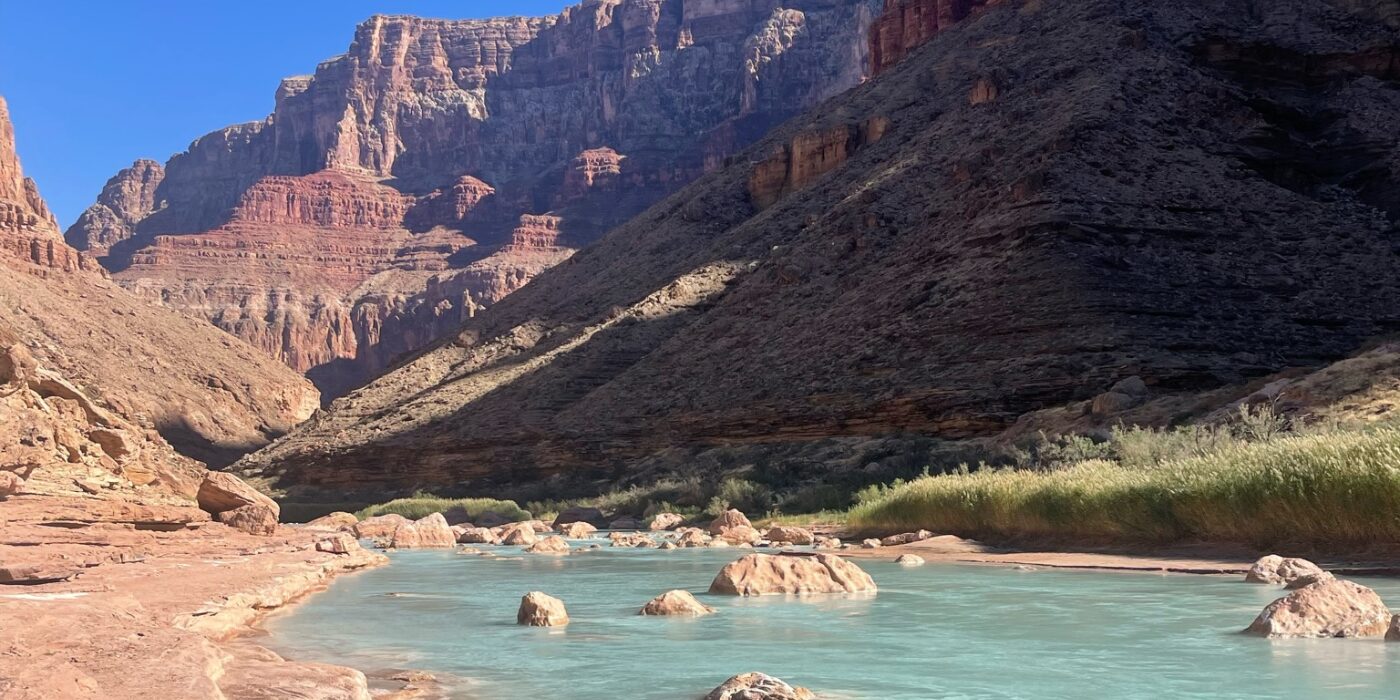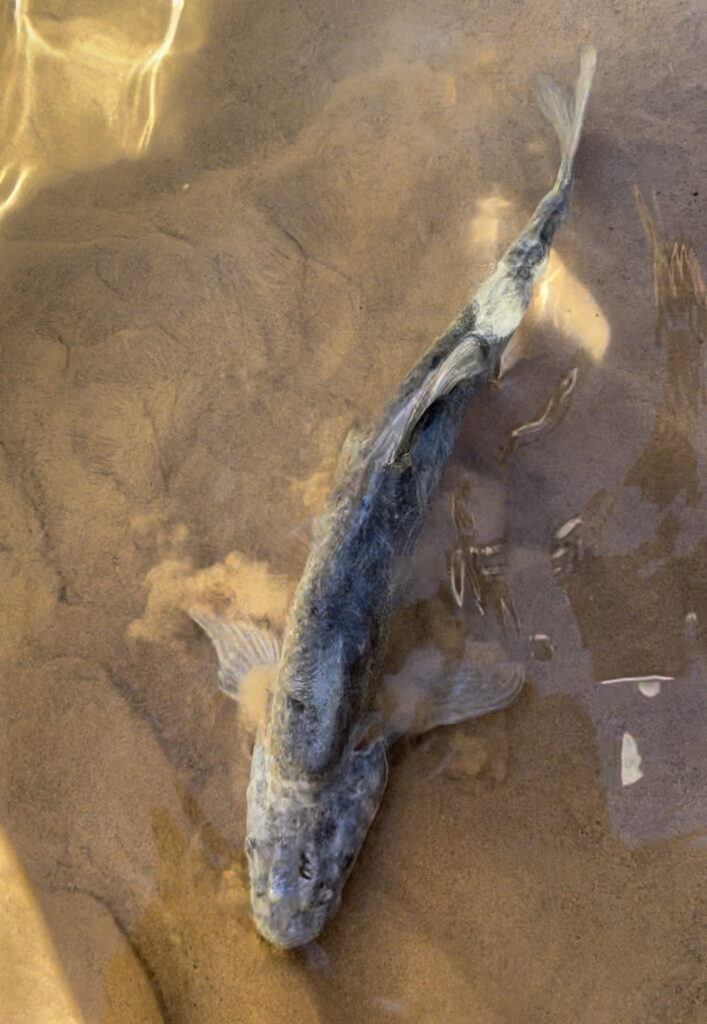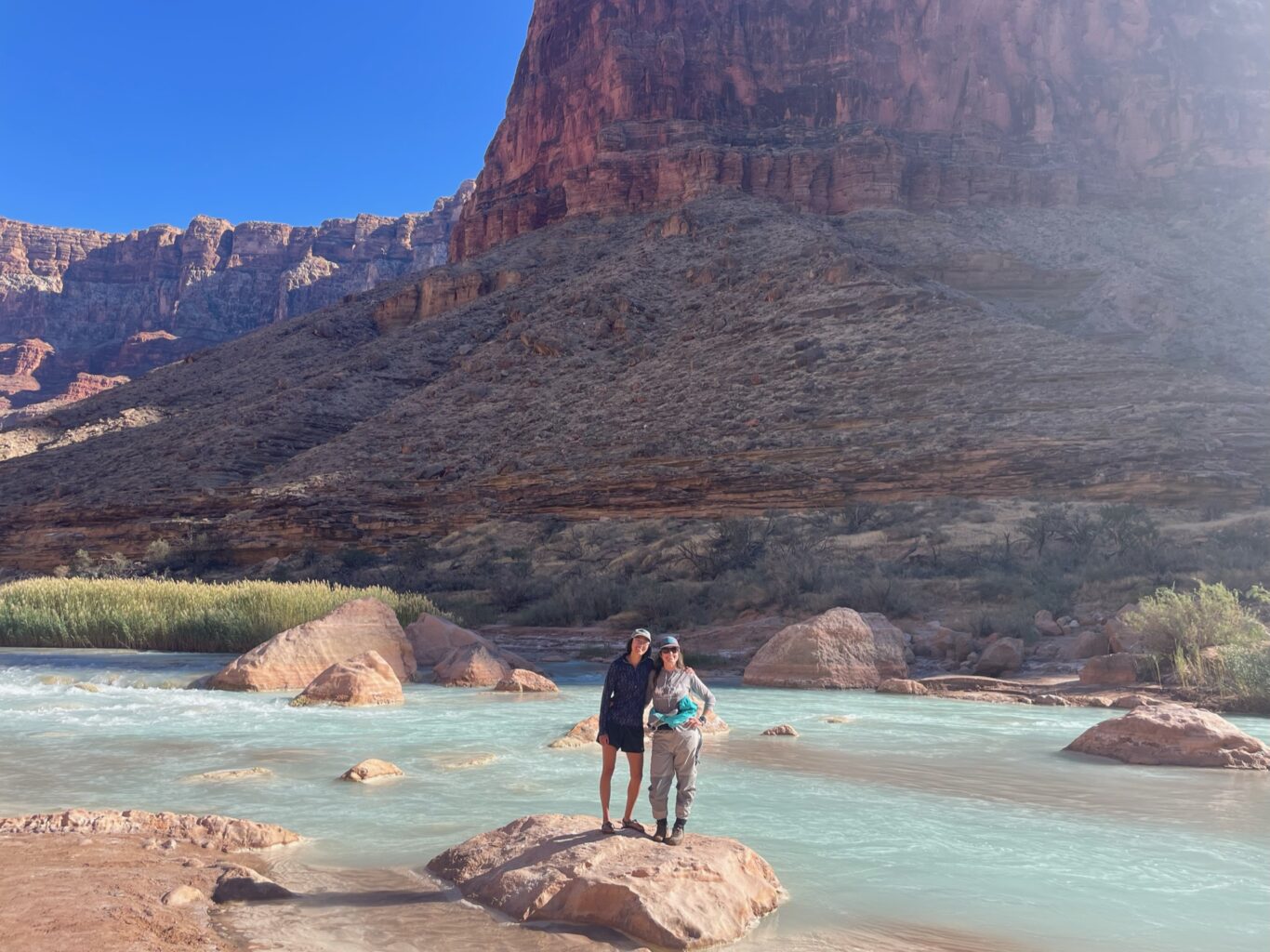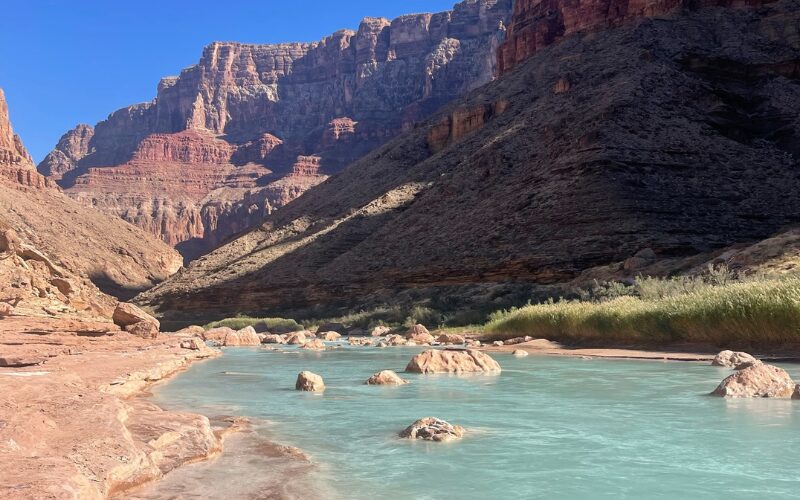It’s a wonder to contemplate how the most majestic landscapes we have are also the most fragile. How we once considered damming the Colorado’s waters here in the heart of the Grand Canyon, and now we’re on its beaches using ground tarps to ferry the crumbs of our dinners to be washed downstream to protect the character of the canyon.
The Colorado is at once respected as an entity and pillaged as a resource. If you define the river as the whole self of its waters and the ecosystems it supports, then I’d say it’s capable of the sort of suffering and loss that we normally ascribe to more sentient beings. – Journal excerpt from my 22nd day in the Grand Canyon, at Surprise Canyon Camp (River Mile 249).

The Colorado River and the precious species that depend on its waters, silts, and sunlight are vulnerable to the rapid changes brought by human use and climate change.
Water temperature in the Grand Canyon used to fluctuate from just above freezing to as high as 80°F, and it carried heavy loads of soil particles and sand. Once Glen Canyon Dam, which forms Lake Powell, was completed in 1963, the water temperature shifted to hover around 46°F as the water sent through the canyon is pulled from the chilly depths of Lake Powell. The dam also blocks much of the sediment, rendering the iconically chocolate flows of the past now crystal clear for much of the year.
The impacts of an engineered environment are felt throughout the canyon. Native wildlife evolved with the variable temperatures and muddy water of the old Colorado River, and the change to cold, clear water has had terrible consequences.

Humpback Chub at confluence of the Little Colorado River and Colorado River. Photo courtesy: Joanna Zhang
Take the humpback chub, a silver and olive-colored fish named for the signature hump just behind its head. Young humpback chubs are no match for non-native predators like rainbow trout, which hunt by sight, something that humpback chubs didn’t have to worry about in the silty waters of the once free-flowing Colorado River.
Colder waters have drastically reduced available spawning habitat for the humpback chub. Warmer pockets of the Colorado are located at the confluence of certain tributaries that bring in warmer water, such as where the Little Colorado River meets the mainstem Colorado around River Mile 62.
The sharp declines in population landed the humpback chub a spot on the country’s first list of endangered species in 1968. With recovery management plans in place, humpback chub populations have improved somewhat since their initial listing in 1968, although the U.S. Fish and Wildlife Service’s 2020 decision to delist their status from “endangered” to “threatened” remains controversial. As chronic overuse, decades of ongoing severe drought, and no long-term solutions in sight threatens to strangle the Colorado River, the humpback chub needs ESA protections now more than ever.
Today, the largest remaining population of humpback chubs is found at the Colorado River’s confluence with the Little Colorado River, and we were fortunate enough to spot some chubs at this location on our trip. While we had our rafts tied to shore to have lunch above the confluence, a group of humpback chubs darted out from under the boats. To see this imperiled species for myself was deeply meaningful and, frankly, thrilling. For about fifteen minutes, the chubs swam under our tethered boats. One even boldly came right up to our feet at the water’s edge.
My descent of the Colorado River coincided with the 50th anniversary of the Endangered Species Act, one of the most powerful legal tools we have to protect species from extinction. Witnessing the vibrant life and ancient rhythms of the canyon was a powerful reminder of why we must protect our natural heritage from being damned to extinction. To experience the promise and fragility of a living river, and to witness humpback chubs simply existing in their natural habitat…that is the essence of Guardians.

Joanna and Bri at the Little Colorado River
